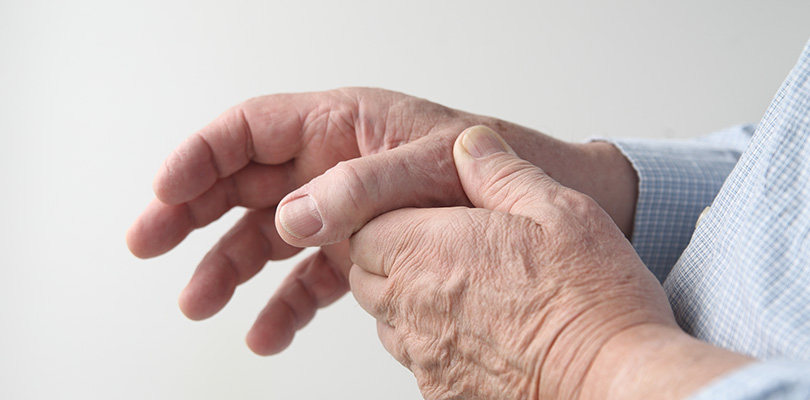Septic Arthritis
Septic arthritis is a painful joint condition that occurs when an infection travels through the bloodstream and settles in a joint, or when a joint is infected directly.
Let’s take a closer look at septic arthritis and its causes, symptoms, and treatment.
What Is Septic Arthritis?
Septic arthritis, sometimes known as infectious arthritis, occurs when a joint becomes infected. This can happen as a result of microbes traveling through the bloodstream and into the joint, or due to an infection being introduced into the joint itself.
In either scenario, your immune system’s natural reaction is to try and eliminate the infection. In the process, it creates inflammation, and this is what leads to joint pain and other septic arthritis symptoms.
Although an infection causes septic arthritis, it cannot be passed on to other people. It should not be confused with the joint pain that can accompany other infections such as mumps, rubella, or Lyme disease.
What Causes Septic Arthritis?
Septic arthritis can be caused by bacterial, viral, or fungal infections. The most common culprit is the staphylococcus aureus bacteria, which live naturally on the surface of the skin.
These microbes can enter the body via an injury, animal bite, or surgery. They can then travel through the blood to a joint where they become lodged in the enclosed space. Alternatively, infections can be introduced directly into a joint either by a penetrating wound or surgery such as a hip or knee replacement.
As your immune system tries to fight off the infection, it creates inflammation, and it is this which leads to the various symptoms of septic arthritis.
You are at a higher risk of developing septic arthritis if your immune system is compromised in some way. Older people and young children may be especially vulnerable.
Symptoms of Septic Arthritis
Septic arthritis symptoms are similar to those of other types of arthritis. However, they usually come on much more quickly and may only affect one joint.
The symptoms of septic arthritis can occur within just a few hours of the original infection, and they may include:
- Severe joint pain
- Redness, tenderness, and swelling
- Hot skin surrounding the joint
- Joint stiffness or loss of mobility
- Fever
- Fatigue
The joints most commonly affected by septic arthritis are the knees and hips. However, any joint in the body may be affected.
Septic Arthritis Prognosis
It is possible to make a full recovery from septic arthritis, providing you receive the correct treatment early enough. If treatment is delayed, the cartilage and bone of the joint could be permanently damaged, leading to long term pain and loss of function.
In some cases, people whose septic arthritis is left untreated may develop sepsis, a serious condition that can be fatal.
Osteoarthritis is a difficult disease to live with, but there are options to make life a bit more comfortable – one option is Botox for osteoarthritis.
Septic Arthritis Diagnosis
Your doctor will ask about your symptoms and carry out a physical exam. If they suspect that you have septic arthritis, they will refer you for tests to confirm their diagnosis.
Tests include taking a sample of fluid from the affected joint and blood tests. These will allow your doctor to identify which microbes are causing the infection so that they can prescribe the correct treatment. Your white blood cell count may also be raised, indicating that your immune system is trying to fight the infection.
You may also be referred for a scan of the affected joint. This could be an X-ray or MRI scan and can indicate how much damage has already been done by the infection.
Septic Arthritis Treatment
The treatment for septic arthritis depends on the exact cause.
Antibiotics
Since most cases of septic arthritis are due to a bacterial infection, the most common treatment is antibiotics. These may need to be administered intravenously, at least for the first few days, and you might need to stay in the hospital during this time.
You may need to take antibiotics for as long as 6–8 weeks in total. Although you might start seeing improvements after just a few days, you must continue taking your antibiotics as prescribed and complete the entire course of treatment.
Some possible side effects of antibiotic treatment include nausea, vomiting, and diarrhea. If you suffer from these side effects, let your doctor know and do not stop taking your medication suddenly.
Antiviral Medications
Treating viral and fungal septic arthritis can be a little more challenging. Most viruses do not respond to medication but will eventually clear up by themselves. However, in some cases, antiviral medication may be recommended. Fungal infections can require weeks of treatment with powerful antifungal medications.
This type of septic arthritis can be very severe, and infected tissue may need to be removed surgically.
Other Treatment Options
Other septic arthritis treatments include draining the joint, arthroscopy, and open surgery. Joints can be drained using a needle and syringe to draw out the infected fluid and relieve inflammation. Arthroscopy is a similar procedure in which tiny tubes are inserted into the joint allowing infected fluid to be drained away.
When these procedures cannot be carried out easily, for example, when septic arthritis affects the hip, open surgery to remove infected tissue may be the only choice.
Conclusion
While you are being treated for septic arthritis, you should rest your affected joint as much as possible. You might want to consider using a splint or support to offer some extra protection to the joint, but you should not keep these on all the time. This is because it is important to allow some movement in the joint to prevent it from becoming stiff and losing mobility over time.
Range of motion exercises and physical therapy are both key septic arthritis treatments and can help to limit permanent joint damage. These should be conducted under the supervision of a trained professional to avoid making the situation worse.







